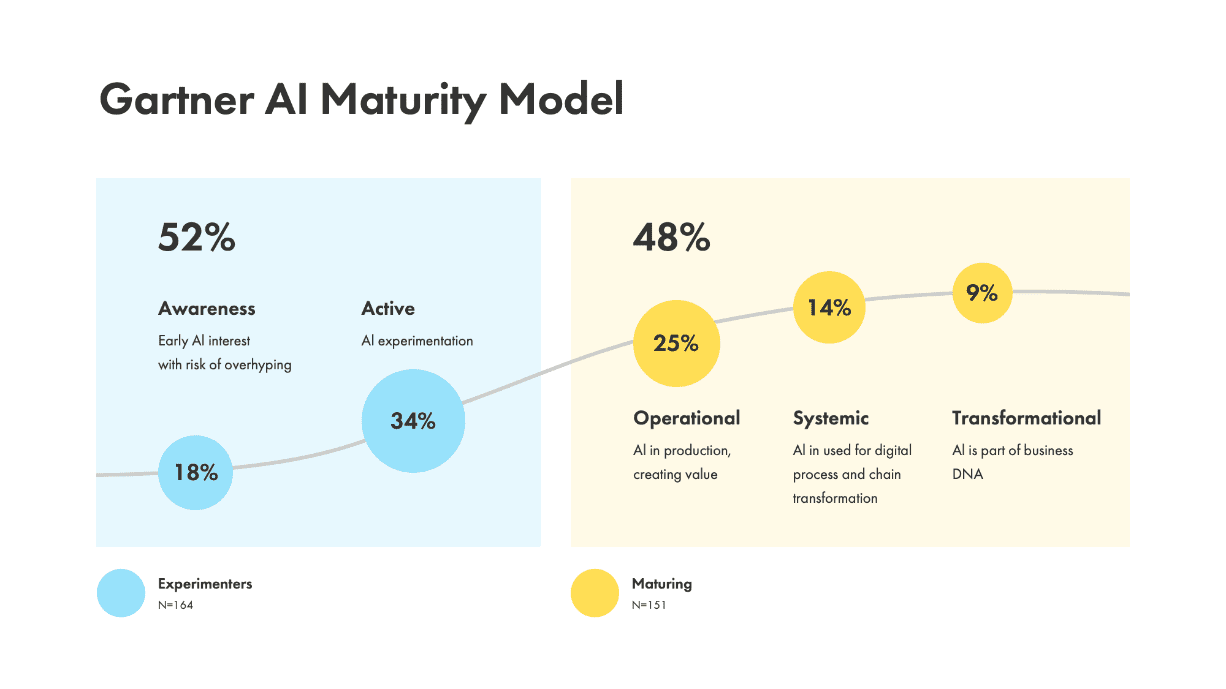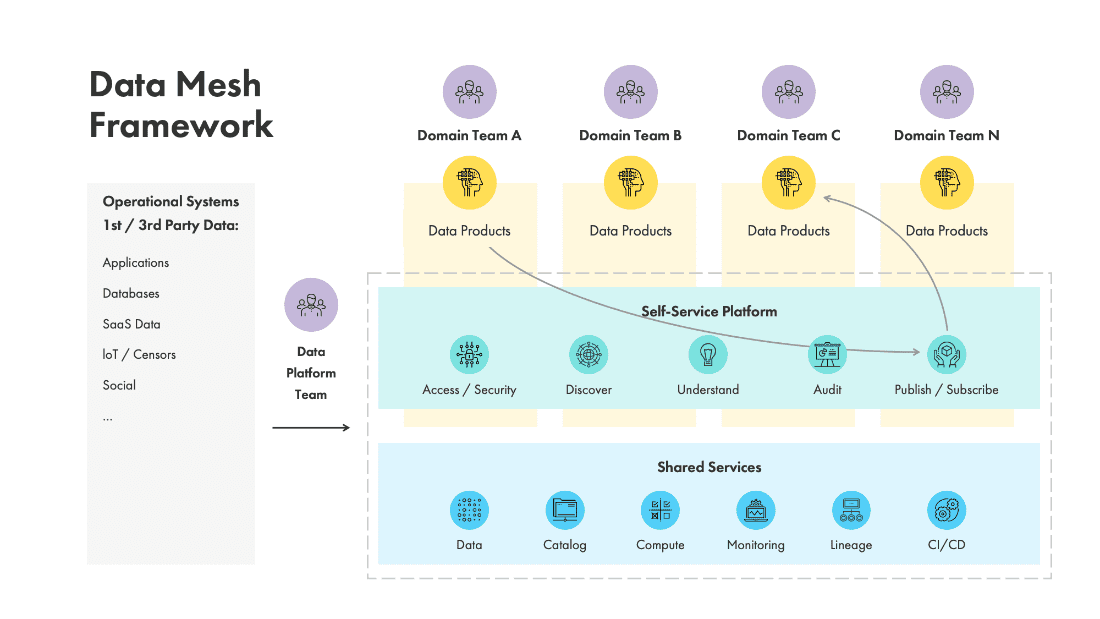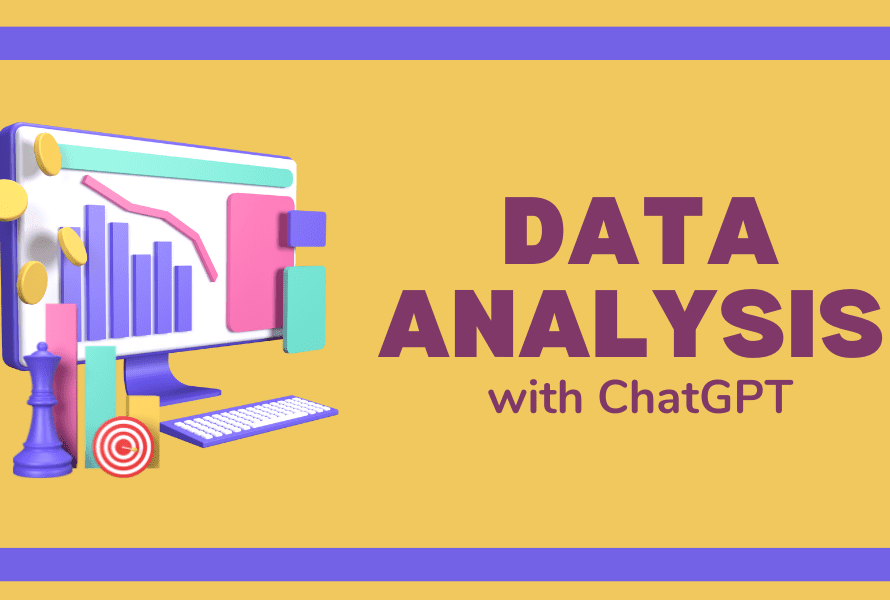
Photo by Google DeepMind
In the relentless pursuit of innovation and securing a competitive advantage, businesses are progressively harnessing the power of artificial intelligence (AI) as a transformative tool. The promise of AI to streamline operations, elevate decision-making processes, and unveil concealed patterns within data has spurred its swift integration across industries, especially in retail, manufacturing, and distribution.
However, despite the compelling possibilities, achieving the maximum benefits of AI hinges on a robust groundwork of data maturity. Unfortunately, numerous enterprises encounter challenges in attaining this maturity due to various factors. These challenges often encompass:
- Fragmented data silos
- Poor data quality
- Limited transparency about data assets and skills
- Organizational inertia toward reestablishing a balance between technology as an enabler vs. provider of business data needs
In this article, I will highlight prescriptive strategies to overcome these challenges toward establishing a robust data foundation for scaling differentiated AI capabilities.
Retail, manufacturing, and distribution leaders use AI’s power to achieve remarkable results, from optimizing supply chains to predicting customer behavior. Generative AI is gaining mainstream traction. A recent Fortune/Deloitte CEO survey found widespread CEO interest in the potential of generative AI. In a recent survey, 79% of chief executive officers expressed optimism in technology’s potential to enhance operational efficiency, with over half anticipating the emergence of new avenues for growth. A substantial portion revealed ongoing efforts in evaluating and experimenting with generative AI, underscoring a proactive approach to harnessing cutting-edge advancements in the business landscape.
Industry leaders with the highest levels of AI maturity have demonstrated differentiated capabilities to drive sales and optimize operations. For instance, Amazon’s AI-powered recommendation engine, which suggests products based on a customer’s past purchases and browsing history, has been instrumental in driving sales. Similarly, Walmart has successfully used AI algorithms for inventory management and demand forecasting, which means the retail giant is deploying AI to ensure that products are available when and where its customers need them.
Yet, according to Gartner’s AI Maturity Model, 52% of mid-to-large US organizations are still experimenting with AI.

Chief data officers who play an essential role in adopting AI and supporting digital transformation and are responsible for data strategy and governance within organizations see data quality as one of the largest obstacles to fully leveraging AI capabilities, according to a recent AWS Survey of over 300 CDOs.
Let’s look at the data maturity challenges that impact AI adoption and how to overcome them.
Despite the undeniable potential of AI, many enterprises need help scaling AI-enabled use cases due to data-related hurdles. As organizations embark on ambitious AI initiatives, they often encounter significant roadblocks that hinder timely implementation and widespread adoption. Organizations must prioritize data maturity to navigate these challenges and fully realize the potential of AI.
Data maturity refers to an organization’s ability to effectively manage, govern, and utilize its data assets. It encompasses data quality, governance, integration, and analytics capabilities. A lack of data maturity can lead to several challenges that hinder AI adoption and scalability, such as:
- Data Silos and Fragmentation: Data scattered across disparate systems and formats creates data silos, which can prevent holistic utilization company-wide.
- Data Quality Issues: Inaccurate, incomplete, or inconsistent data can lead to flawed AI models and unreliable insights.
- Data Governance Gaps: Without proper data governance practices, businesses can face issues related to data security, privacy, and compliance.
- Limited Data Analytics Capabilities: The inability to extract meaningful insights from data can hamper the development and application of AI.
These challenges underscore the critical role of data maturity in enabling AI scalability. To overcome these hurdles, enterprises must adopt a comprehensive data management and governance approach.
DataArt offers enterprises comprehensive strategies and solutions to augment data maturity. We propel our partners toward a software ecosystem where data is democratized, agile, and purpose-driven, surmounting obstacles hindering AI adoption. By fostering a culture of data ownership, empowerment, and innovation, enterprises are better positioned to harness AI’s transformative potential and drive scalable, AI-enabled use cases, placing themselves at the cutting edge of a future defined by data-driven excellence and sustained growth.
The emergence of the Data Mesh and Data Product strategies heralds a transformative paradigm shift in the global economy. Data Mesh, a novel architectural approach, advocates decentralizing data ownership and management, fostering domain-driven data architecture across a single enterprise. This strategy aims to alleviate the bottlenecks of centralized data lakes or warehouses by distributing data ownership to domain-specific teams. Through this work of data distribution, Data Mesh empowers teams to curate, own, and evolve their data products, promoting agility and scalability while maintaining data governance and quality.

Figure 1: Data Mesh framework to enable fast value realization through business domain-driven data products.
Simultaneously, the Data Product strategy further solidifies the foundation for AI scalability. It champions the conceptualization, creation, and management of data as products that cater to specific user needs within an organization. Each data product encapsulates valuable insights, prepared datasets, or analytical tools tailored for consumption by diverse stakeholders. This approach fosters a culture of data ownership and empowers teams to innovate, collaborate, and derive actionable insights from curated data products, accelerating AI adoption.
For example, a customer segmentation analytical data product can be further used to create churn data products, and both can be used for marketing purposes to generate hyper-personalized content for customers. Without a data product or data product marketplace, teams would have to spend time building these analytical capabilities from scratch. Instead, each new use case can reuse and repurpose existing data products, reducing development time and producing more consistent outputs.
As companies across industries seek more effective ways to manage their data, several factors must be carefully considered. Data democratization involves making data accessible and understandable to stakeholders, like data scientists, business analysts, domain experts, management, and executives. Additionally, companies must ensure their data is readily available, legible but also secure, and compliant, with transparent standards and controls. Implementing the correct security and compliance measures will help businesses safeguard data integrity, privacy, and regulatory adherence.
This evolution represents a sea change in how organizations harness data. Historically, IT departments were responsible for building their company’s data-related modules, like warehouses and analytical data products. It can become a technology facilitator rather than solely controlling data access and provisioning by implementing an AI-powered approach to data democratization. With a deployed AI-powered system, IT can focus its resources on empowering users to independently navigate and derive insights from their company’s data. Enabling this transition requires a fundamental shift in IT’s role, moving from gatekeepers to partners in fostering collaboration and innovation.
Data curation plays a pivotal role in ensuring the quality, relevance, and usability of data assets within an organization. However, maintaining it is often a challenge due to the sheer volume and variety of data sources, functional silos, and manual effort. This is one of the areas that can be improved with AI. AI-driven tools and algorithms can automate data processing tasks, enabling faster curation, data cleaning, and normalization, reducing manual efforts. AI algorithms can recognize patterns within data and contextualize information, facilitating more accurate curation and categorization.
By adopting and implementing these strategies, enterprises can establish a strong data maturity foundation, enabling them to harness AI’s power effectively and scale AI-enabled use cases across their businesses. In addition, DataArt can help companies establish or improve core foundational capabilities that connect technology, people, and processes, such as:
- Breaking Down Data Silos: Integrating data from disparate sources into a centralized repository, ensuring data consistency and accessibility.
- Establishing Data Governance: Implementing a framework that defines data ownership, access controls, data quality standards, and data usage policies.
- Enhancing Data Quality: Implementing data quality checks, cleansing processes, and enrichment techniques to improve data accuracy and completeness.
- Fostering Data Literacy: Training employees on data management principles, data analysis techniques, and data-driven decision-making to enhance organizational data utilization.
- Investing in Data Infrastructure: Upgrading data infrastructure to handle the growing volume, velocity, and variety of data, ensuring efficient data storage, processing, and analysis.
- Embracing DataOps: Implementing DataOps practices to automate data management processes, enabling rapid data delivery and continuous improvement.
- Leveraging Cloud-Based Data Solutions: Utilizing cloud-based data platforms to gain scalability, flexibility, and cost-efficiency in data management.
- Continuous Monitoring and Improvement: Monitoring data quality, governance compliance, and usage patterns to identify and address emerging challenges.
Data maturity is not just a technical requirement; it is a strategic imperative for enterprises seeking to unlock the transformative potential of AI. By addressing the critical challenges associated with data maturity, enterprises can pave the way for a future shaped by data-driven insights and AI-powered innovation.
Oleg Royz is a Vice President, Retail and Distribution at DataArt.



